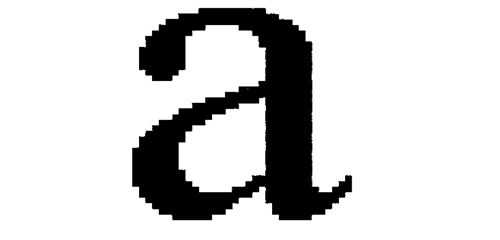
Aliasing has two definitions, depending on whether you’re talking about pictures or sounds.
When a diagonal line or a curved arc drawn on the screen looks as if it was made out of bricks, when it looks like stair steps instead of a slide, the effect is technically called aliasing. Most of us would say it had the jaggies. It can be ameliorated by the technique of ANTIALIASING.
The phenomenon by which a digitized sound sample may pick up unwanted spurious frequencies. It affects digitally reproduced sound, which is the kind of sound your computer probably makes. (The beeps you hear from a standard PC speaker aren’t digital, but a sound board you plug into your PC creates sound digitally; the Mac has built-in digital sound.)
Digital sound is based on a sequence of numbers (digits) that are converted into sound waves by electronic circuits. The computer has to guess at what sound to make between each number in the sequence. If the time between each value is too long (if the “sampling rate” is low), you hear the mistaken guesses as a metallic, static distortion called aliasing. To squelch aliasing, you need a soundcard with a sampling rate of around 40 kilohertz (40,000 times a second) or higher.
Both these phenomena result from sampling the data at a frequency below its NYQUIST FREQUENCY: that is, displaying a line on a screen of too Iowa resolution or sampling the sound at too Iowa frequency. In fact aliasing is a potential source of distortion when sampling any form of data, another example being the optical illusion that wheels are rotating backwards often seen when old movies are shown on television.
 Dinesh Thakur holds an B.C.A, MCDBA, MCSD certifications. Dinesh authors the hugely popular
Dinesh Thakur holds an B.C.A, MCDBA, MCSD certifications. Dinesh authors the hugely popular